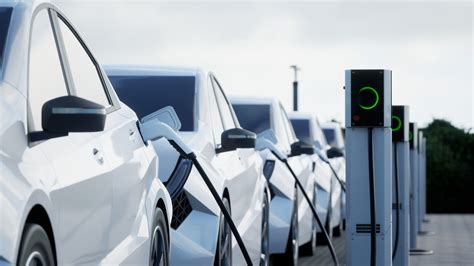As the world shifts towards a more sustainable and environmentally conscious future, governments and regulatory bodies are implementing policies to reduce carbon emissions and promote eco-friendly practices. One such policy is the EV mandate, which requires automakers to produce a certain percentage of electric vehicles (EVs) as part of their overall sales. But what exactly does this mandate entail, and how do companies ensure compliance?
To understand the EV mandate, it’s essential to delve into the regulatory framework that governs the automotive industry. The EV mandate is a type of regulation that sets specific targets for the production and sale of electric vehicles. These targets can vary by region, with some countries or states setting more ambitious goals than others. For instance, the European Union has set a target of having at least 50% of all new car sales be electric by 2035, while California aims to have 100% of new car sales be electric by 2035.
The EV mandate is designed to encourage automakers to invest in electric vehicle technology and reduce their reliance on internal combustion engines. By setting specific targets, governments can create a level playing field for companies to innovate and compete in the EV market. However, the mandate also poses significant challenges for automakers, particularly those with limited experience in producing electric vehicles.
One of the primary challenges is meeting the production targets set by the mandate. Automakers must invest heavily in new technologies, manufacturing facilities, and supply chains to produce electric vehicles at scale. This requires significant upfront costs, which can be a barrier for smaller companies or those with limited resources. Additionally, the mandate can create complexity in the production process, as companies must balance the production of electric vehicles with their existing internal combustion engine production lines.
To ensure compliance with the EV mandate, companies must develop a comprehensive strategy that addresses the technical, operational, and financial aspects of electric vehicle production. This includes investing in research and development, building new manufacturing facilities, and establishing partnerships with suppliers and technology providers. Companies must also navigate the complex regulatory landscape, ensuring that their vehicles meet the necessary safety and emissions standards.
Despite the challenges, many companies are already making significant progress in meeting the EV mandate. For example, Volkswagen has announced plans to launch 70 new electric models by 2029, while General Motors has committed to offering 20 electric models by 2025. These companies are not only meeting the regulatory requirements but also creating new business opportunities and revenue streams.
However, the EV mandate also raises important questions about its impact on the environment, public health, and the economy. While electric vehicles are generally considered to be more environmentally friendly than internal combustion engines, the production of EVs requires significant amounts of energy and resources. Additionally, the disposal of EV batteries at the end of their life cycle poses significant environmental risks.
To address these concerns, governments and regulatory bodies must develop a more nuanced approach to the EV mandate. This includes implementing policies that promote sustainable production practices, encourage the recycling of EV batteries, and provide incentives for companies to invest in environmentally friendly technologies. Additionally, governments must ensure that the benefits of the EV mandate are shared equitably among all stakeholders, including consumers, workers, and communities.
In conclusion, the EV mandate is a complex and multifaceted policy that requires careful consideration of its regulatory, technical, and environmental implications. While it poses significant challenges for companies, it also creates opportunities for innovation, growth, and sustainable development. By understanding the EV mandate and its requirements, companies can develop effective compliance strategies, reduce their environmental impact, and thrive in a rapidly changing market.
What is the EV mandate, and how does it affect the automotive industry?
+The EV mandate is a regulatory policy that requires automakers to produce a certain percentage of electric vehicles as part of their overall sales. It aims to promote sustainable transportation, reduce carbon emissions, and encourage innovation in the automotive industry.
How do companies ensure compliance with the EV mandate?
+Companies must develop a comprehensive strategy that addresses the technical, operational, and financial aspects of electric vehicle production. This includes investing in research and development, building new manufacturing facilities, and establishing partnerships with suppliers and technology providers.
What are the benefits and drawbacks of the EV mandate?
+The EV mandate can reduce carbon emissions, improve air quality, and promote sustainable transportation. However, it also poses significant challenges for companies, including the need for significant upfront investments and the risk of disrupting the automotive industry. Additionally, the production of EVs requires significant amounts of energy and resources, and the disposal of EV batteries poses environmental risks.
As the EV mandate continues to shape the automotive industry, companies must remain vigilant and adaptable to ensure compliance and stay ahead of the competition. By understanding the regulatory framework, investing in sustainable technologies, and promoting environmentally friendly practices, companies can thrive in a rapidly changing market and contribute to a more sustainable future.



